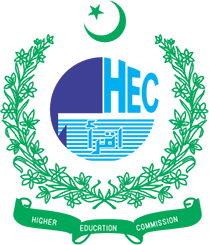Exploring the Prevalence of Alexithymia Among Medical Students and Its Impact on Their Academic Performance: A Cross-Sectional Study in Peshawar, Pakistan
DOI:
https://doi.org/10.54112/bcsrj.v6i3.1655Keywords:
alexithymia; medical students, academic performanceAbstract
Transitioning from high school to medical college presents various psychological challenges for students, including alexithymia, a condition characterized by difficulties in identifying and expressing emotions. This study investigates the prevalence of alexithymia among medical students in Peshawar, Pakistan, and explores its potential impact on academic performance. Objective: To determine the prevalence of alexithymia among medical students, compare alexithymia levels across different academic years, and assess its association with academic performance. Methods: A descriptive cross-sectional study was conducted at Khyber Medical College, Peshawar, from September 2023 to September 2024, involving 227 medical students. Alexithymia was assessed using the Toronto Alexithymia Scale (TAS-20). Academic performance was measured based on annual marks and attendance. Data were analyzed using descriptive statistics, t-tests, and chi-square tests. Results: The study found that 122 (52.4%) students exhibited alexithymia, with a higher prevalence among female students (57.3%, n = 70 out of 122). Despite the notable prevalence of alexithymic traits, no significant association was observed between alexithymia and academic performance (p = 0.47). Most participants reported that emotional difficulties did not affect their studies, and very few sought psychiatric consultation or took leave due to emotional disturbances. Conclusion: Alexithymia is prevalent among medical students in Peshawar, particularly among females. However, the lack of a significant impact on academic performance suggests a level of resilience in students. Further research into coping strategies and support systems is recommended. Addressing alexithymia within medical education may improve both emotional well-being and academic outcomes.
Downloads
References
Bratis D, Tselebis A, Sikaras C, Moulou A, Giotakis K, Zoumakis E, et al. Alexithymia and its association with burnout, depression and family support among Greek nursing staff. Human resources for health. 2009;7:1-6.
Messedi N, Feki I, Saguem B, Masmoudi R, Masmoudi J. Alexithymia and coping strategies among medical students. European Psychiatry. 2017;41(S1):S695-S.
Martínez-Sánchez F, Ato-García M, Ortiz-Soria B. Alexithymia—state or trait? The Spanish journal of psychology. 2003;6(1):51-9.
Hamaideh SH. Alexithymia among Jordanian university students: Its prevalence and correlates with depression, anxiety, stress, and demographics. Perspectives in psychiatric care. 2018;54(2).
McGillivray L, Becerra R, Harms C. Prevalence and demographic correlates of alexithymia: A comparison between Australian psychiatric and community samples. Journal of clinical psychology. 2017;73(1):76-87.
Jc N. Alexithymia: A view of the psychosomatic process. Modern trends in psychosoamtic medicine. 1976;3:430-9.
Schmitz MJ. Alexithymia, self-care, and satisfaction with life in college students: University of Missouri-Columbia; 1999.
Scimeca G, Bruno A, Crucitti M, Conti C, Quattrone D, Pandolfo G, et al. Abnormal illness behavior and Internet addiction severity: The role of disease conviction, irritability, and alexithymia. Journal of behavioral addictions. 2016;6(1):92-7.
Li L, Niu Z, Griffiths MD, Wang W, Chang C, Mei S. A network perspective on the relationship between gaming disorder, depression, alexithymia, boredom, and loneliness among a sample of Chinese university students. Technology in Society. 2021;67:101740.
Alzahrani SH, Coumaravelou S, Mahmoud I, Beshawri J, Algethami M. Prevalence of alexithymia and associated factors among medical students at King Abdulaziz University: a cross-sectional study. Annals of Saudi medicine. 2020;40(1):55-62.
Ng CS, Chan VC. Prevalence and associated factors of alexithymia among Chinese adolescents in Hong Kong. Psychiatry Research. 2020;290:113126.
Aryan H, Faridhosseini F, Gharavi M, Tamiztousi T, Ziaee M. Prevalence of Generalized Anxiety Disorder, Alexithymia, and Defense Mechanisms Among Medical Students of Northeastern Iran in 2020. Iranian Journal of Psychiatry and Behavioral Sciences. 2023;17(1).
Balaban H, Semiz M, Şentürk İA, Kavakçı Ö, Cınar Z, Dikici A, et al. Migraine prevalence, alexithymia, and post-traumatic stress disorder among medical students in Turkey. The journal of headache and pain. 2012;13:459-67.
Katsifaraki M, Tucker P. Alexithymia and burnout in nursing students. Journal of Nursing Education. 2013;52(11):627-33.
Lală A, Bobîrnac G, Tipa R. Stress levels, alexithymia, type A and type C personality patterns in undergraduate students. Journal of medicine and life. 2010;3(2):200.
Mason O, Tyson M, Jones C, Potts S. Alexithymia: its prevalence and correlates in a British undergraduate sample. Psychology and Psychotherapy: Theory, Research and Practice. 2005;78(1):113-25.
Scimeca G, Bruno A, Cava L, Pandolfo G, Muscatello MRA, Zoccali R. The relationship between alexithymia, anxiety, depression, and internet addiction severity in a sample of Italian high school students. The Scientific World Journal. 2014;2014(1):504376.
Khan N. Prevalence of alexithymia in the general adult population of Quetta, Balochistan in Pakistan. Cloning Transgenes. 2017;6:2.
Nadeem K, Tehreem IZ, Ahmad N, Masood R, Shafique MS, Rafi A. Alexithymia and its association with smartphone addiction and physical activity in university students of Islamabad. Pakistan Journal of Medical & Health Sciences. 2022;16(10):619-.
Dubey A, Pandey R. Mental health problems in alexithymia: Role of positive and negative emotional experiences. Journal of Projective Psychology & Mental Health. 2013;20(2):128-36.
Karki S, Shrestha O, Thapa N, Gupta S, Chaudhary A, Yadav A, et al. Prevalence of alexithymia among medical students in Nepal: A cross‐sectional study based on a self‐administered questionnaire. Health Science Reports. 2023;6(5):e1262.
Aftab M, Ahmed RA, Tirath K, Jawad A, Saleem R. Prevalence of Alexithymia and Depression in Medical Students Necessitate Attention. Journal of Psychiatry and Psychiatric Disorders. 2023;7:191-200.
Aleisa MA, Abdullah NS, Alqahtani AAA, Aleisa JAJ, Algethami MR, Alshahrani NZ, editors. Association between alexithymia and depression among King Khalid University Medical students: An analytical cross-sectional study. Healthcare; 2022: MDPI.
Downloads
Published
How to Cite
Issue
Section
License
Copyright (c) 2025 Laiba Ali Khan, Bushra Noor, Nida Gul, Aamir Khan, Saif Ullah, Bibi Hafza, Imran Khan, Usama Khan, Ijaz Ul Haq, Farhan Shahzad, Farid Ullah

This work is licensed under a Creative Commons Attribution-NonCommercial 4.0 International License.








